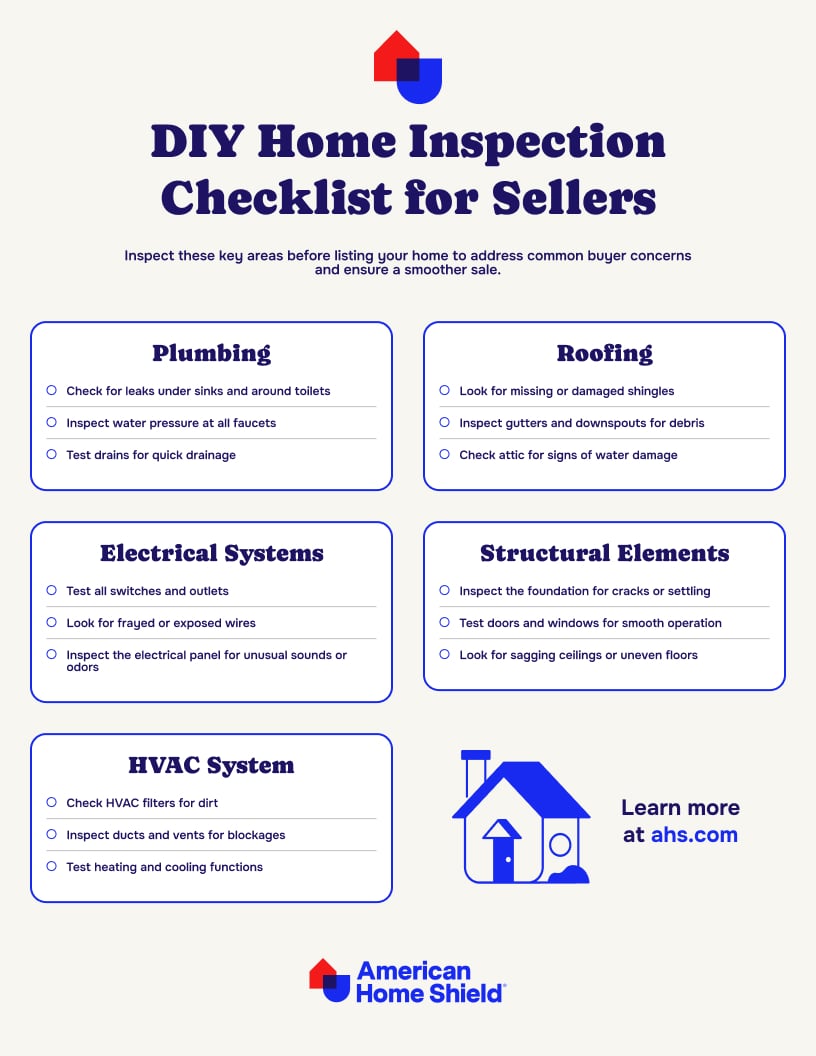DIY Home Inspection Checklist for Sellers
Preparing a house for sale is exciting and stressful, so it’s important to feel empowered and knowledgeable throughout the process. Having a DIY home inspection checklist can be a powerful way to set yourself up for market success.

By following our homeowner inspections checklist (and downloading our checklist PDF), you can feel sure about the functionality of every element of your home throughout the sales process, and build trust with potential buyers.
Why having a home inspection checklist matters
“Aren’t I going to do a professional inspection later?” you may ask. “What’s the point in doing one myself?” Going into the selling process, you’ll want to have as much information about your home as possible. A DIY home inspection allows you to catch little issues before they become big problems for potential buyers.
By understanding your home from top to bottom, you can feel empowered during the sale process. Doing small repairs in advance prevent bigger problems during an official home inspection, and showing prospective buyers that your home has been well-maintained can even help you command a better price. A home inspection checklist equips you with a clear roadmap to identify potential issues, giving you time to fix them before professional inspections or buyer feedback.
A home that’s ready to go, without last-minute fixes, tends to sell faster, and for closer to the asking price. Plus, when it comes to inspections—who knows your home better than you do? Follow along for a do-it-yourself home inspection checklist that guides you through key areas to check and helps you list your home with confidence.
The key areas to inspect before listing your home
For a comprehensive homeowner inspections checklist, you’ll want to focus on the areas that buyers—and professional inspectors—are sure to notice. Follow this house inspection checklist breakdown of the most important areas and some quick tips for each one:
Plumbing and Hot Water Heater
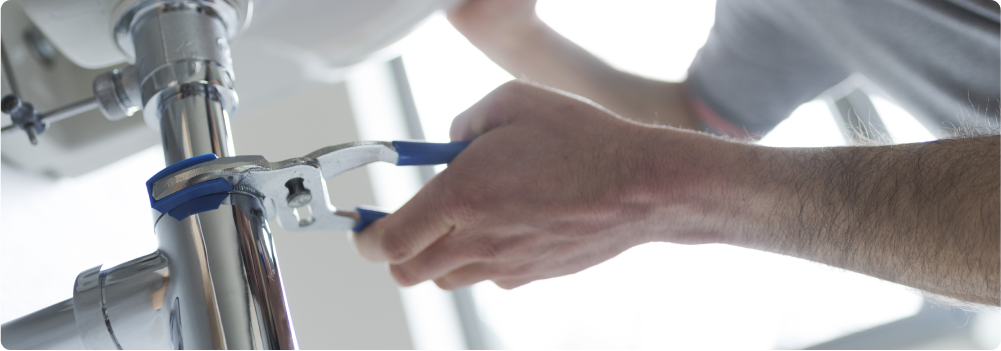
The first step of your do-it-yourself home inspection checklist should be inspecting the plumbing, as leaks and water damage are some of the most common red flags for buyers.
- Check for Leaks: Look under sinks, around toilets, and even in the basement for any signs of leaks or water stains.
- Inspect Water Pressure: Run water from all faucets to check the pressure and ensure there are no clogs or unusual sounds.
- Test Drains: Make sure each sink and tub drains quickly and completely, as slow drains may indicate a clog deeper in the pipes.
- Examine the Hot Water Heater: Check for any signs of rust or leaks around the tank, listen for unusual noises, and make sure the water heats up efficiently.
Electrical systems
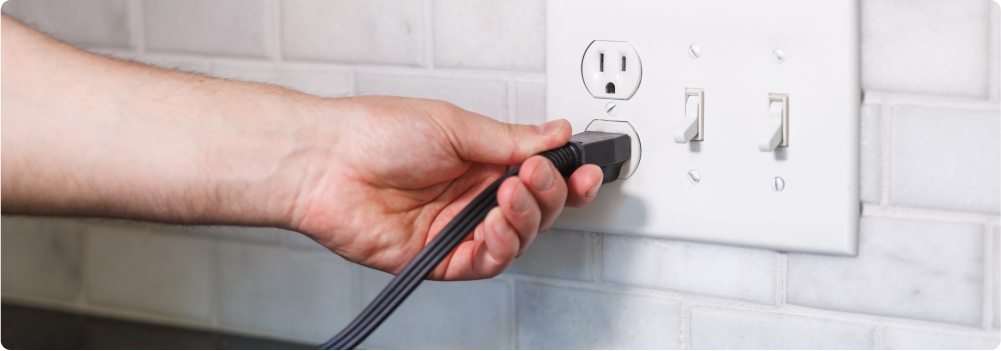
Electrical systems are crucial for safety, so adding this step to your do-it-yourself home inspections checklist can help you spot potential issues early on.
- Test Switches and Outlets: Go through every room to check that switches and outlets work correctly. Flickering lights or dead outlets may point to electrical issues.
- Look for Frayed Wires: Damaged wires are not only dangerous but are also red flags for buyers.
- Inspect the Electrical Panel: Without opening the panel box, ensure that it looks well-organized, and make note of any buzzing sounds or burnt smells which can indicate a need for repair.

HVAC system
Your heating and cooling system is another key area that can affect buyer interest, especially if it’s cold or hot outside. The HVAC portion of your home inspection checklist should include:
- Check Filters: Dirty filters can restrict airflow, making your HVAC work harder. Replacing them is a simple step with a big payoff.
- Inspect Ducts and Vents: Make sure air is flowing properly, and that vents are unobstructed.
- Test Heating and Cooling: Run both heating and cooling functions to make sure they work correctly and keep the home at a comfortable temperature.
Roofing
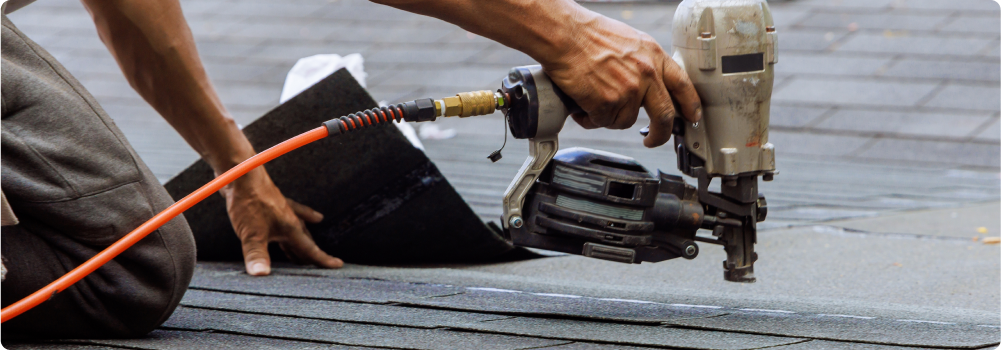
A solid roof is one of the biggest selling points for a home, so make sure yours is in good condition. Completing your homeowner inspections checklist for roofing can prevent surprises like water damage or mold that might deter potential buyers.
- Look for Missing or Damaged Shingles: Missing shingles or visible wear can be a sign of roof damage and may cause leaks.
- Inspect Gutters: Clear any debris from gutters and make sure they’re securely attached to prevent drainage issues.
- Check the Attic: Look for signs of water damage, mold, or leaks inside your attic, which often indicate roofing issues.
Structural elements
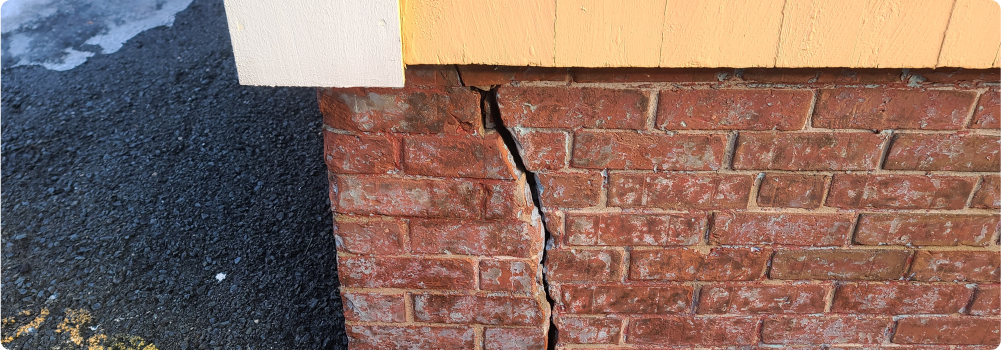
The foundation, walls, and other structural elements are critical for a stable home. Some issues may be subtle but can lead to big repairs down the line. Incorporating a thorough house inspection checklist into your prep ensures no structural concerns—like foundation cracks or uneven floors—are overlooked.
- Inspect the Foundation: Check around the perimeter of the home for any cracks or signs of settling. Small cracks are common, but larger ones could mean there’s an issue.
- Look for Settling: Check if doors and windows close easily. Gaps or trouble closing could signal foundation issues.
- Watch for Sagging Ceilings or Floors: Uneven floors or sagging ceilings may suggest structural problems that need a closer look.
Working through this home inspection checklist helps you target the areas of buyer concern and prepare for a smoother sale. And while it may take a little time, it’s well worth the effort.
How to use your DIY inspection to prep for sale
Once you’ve gone through your house inspection checklist, you’ll have a clearer picture of your home’s current condition and areas that may need attention. Start by prioritizing the major fixes—issues with systems like HVAC, plumbing, or roofing—that tend to be more expensive and could impact the value of your home. These are the type of issues that could lead to buyers negotiating for lower prices or asking for repairs anyway, making it useful to tackle them right off the bat.
Next, consider handling smaller, cosmetic repairs. Simple updates, like a fresh coat of paint, patching holes, or replacing worn fixtures, can significantly enhance the visual appeal of your home without a huge investment.
As you go through your inspection results, it’s important to decide what to disclose to potential buyers. Transparency builds trust, and disclosing any issues you couldn’t address will reduce surprises during their inspection. Overall, using your DIY home inspection checklist as a roadmap to prep for sale means you’re streamlining the formal inspection process, making your listing more appealing, and putting your home on the path to a smooth, successful sale.
Make your home more attractive to buyers with American Home Shield®
Looking for a way to make your home stand out even more to buyers? Including an American Home Shield home warranty plan in your sale can be a powerful selling point.
With coverage for essential home systems and appliances, a home warranty gives buyers peace of mind, knowing they’re protected against unexpected breakdowns after the sale—regardless of age or prior condition. An American Home Shield home warranty eases a smooth transition, giving buyers complete confidence in their new home.
AHS assumes no responsibility, and specifically disclaims all liability, for your use of any and all information contained herein.
Don't worry. Be warranty.
Have a plan for your home when things don't go according to plan
Shop Home Warranties